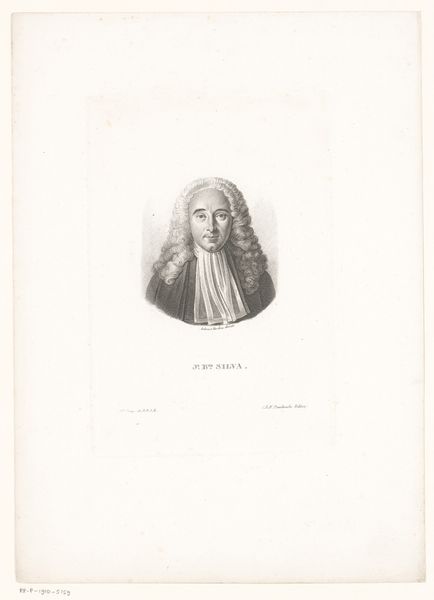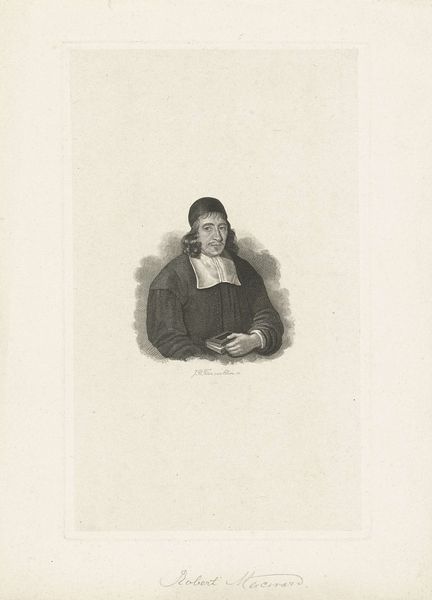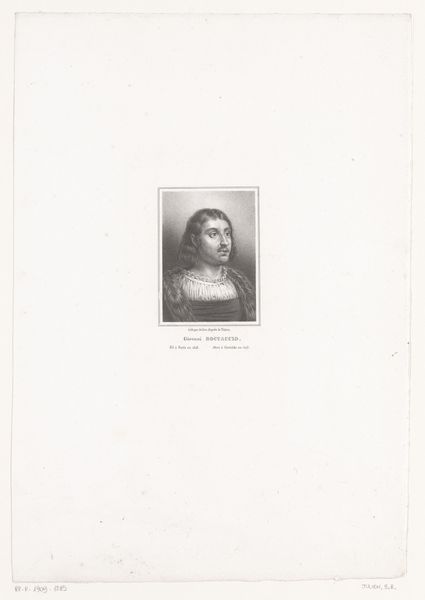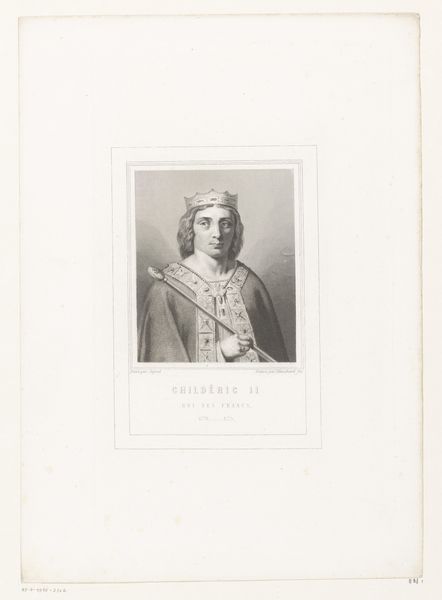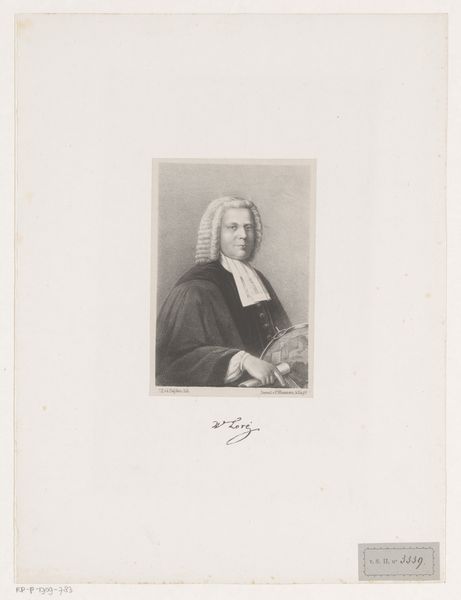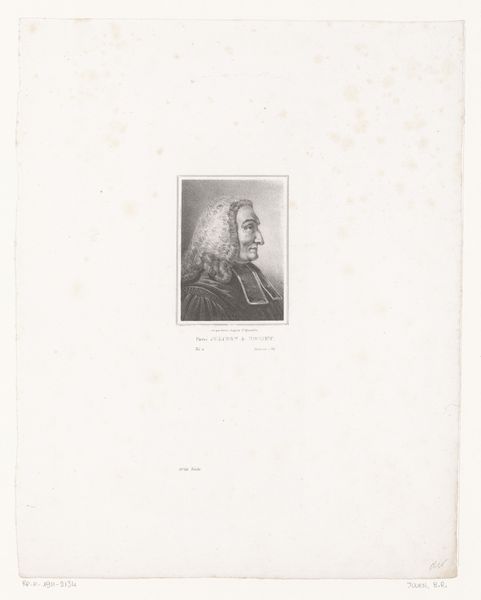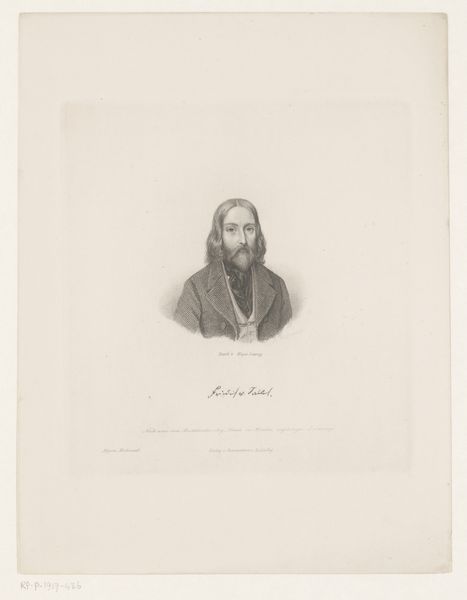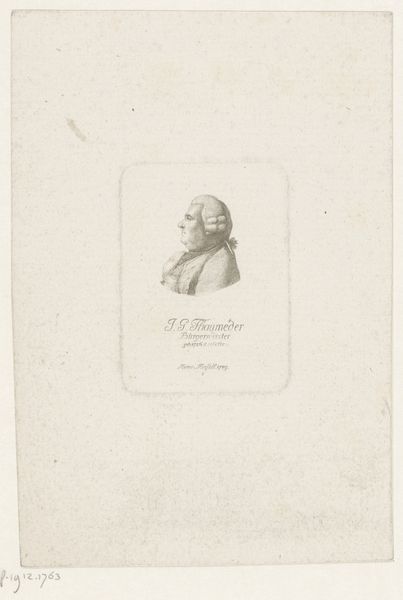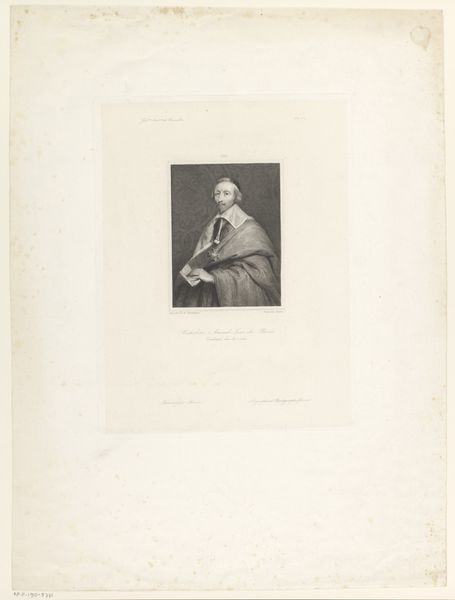
print, engraving
#
portrait
# print
#
old engraving style
#
figuration
#
history-painting
#
academic-art
#
engraving
Dimensions: height 243 mm, width 194 mm
Copyright: Rijks Museum: Open Domain
This is Auguste Thomas Marie Blanchard’s “Portret van Jan II van Frankrijk,” made in the 19th century. The medium here is engraving, a printmaking process that relies on the cutting of lines into a metal plate, which are then filled with ink and transferred to paper. Engraving emerged in the 15th century, and by the 19th, it was an established means of mass production. It allowed for the faithful reproduction of images at relatively low cost. The portrait’s fine lines and controlled gradations of tone reflect the engraver’s skillful manipulation of the burin, the tool used to cut into the metal plate. Note the incredible level of detail, especially in the king’s hair and the folds of his garments. Blanchard's choice of engraving speaks to the democratization of art and knowledge during this period. Rather than a unique painting intended for a wealthy patron, this print would have circulated widely, making historical figures like King John II accessible to a broader audience. So, in looking at this image, consider how its very existence as a multiple reflects the social and technological changes of the 19th century, and its position in the history of both art and industrial production.
Comments
No comments
Be the first to comment and join the conversation on the ultimate creative platform.


